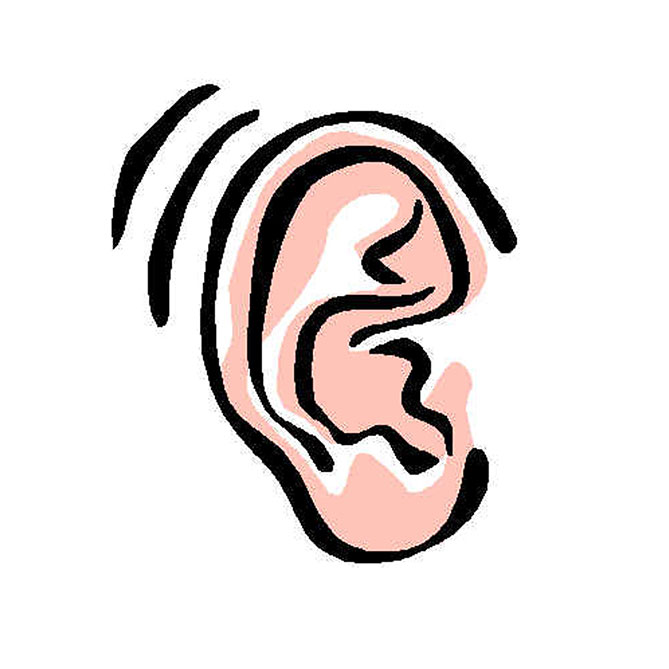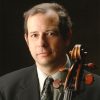
What?….I have to listen too??
Thomas Rosenberg
For seven long minutes he stood. Then he stirred
And he said to the bear, “do you know what I heard?
Do you see that far mountain…? It’s ninety miles off.
There’s a fly on that mountain. I just heard him cough!
Now the cough of a fly, sir, is quite hard to hear
When he’s ninety miles off. But I heard it quite clear.” -Dr. Suess
In Dr. Suess’s story, “The Big Brag”, the rabbit goes on and on about how well he can hear. Of course, that is not the point of the story, which is about how dumb it is to brag about how great you are. (That is a possible topic for another article…not that musicians ever do that!). But it does have an important message that many musicians, especially younger musicians need to learn. Our ears are remarkable and can hear at an amazing level of detail. But it is also remarkable how poorly many music students really listen.
Although it seems obvious, a huge part of musical training involves getting our ears to listen to what our ears are hearing while we are playing our instruments. Fortunately, many students are actively encouraged to do this by their teachers. An equally or perhaps more important part of listening education involves how to teach a student to listen to their self as well as the other musicians playing in a group with them. This is not the type of listening that is commonly focused on in individual music lessons. Hopefully, youth orchestra conductors do this. But they cannot really work with the individuals in great detail. But, a good chamber music coach can work on this in great detail. This is another tremendous benefit to having young musicians play chamber music.
Listening to oneself:
In a chamber music group, each member must listen very carefully to themselves.
Many of the listening issues are the same as in solo playing. They include such things as good intonation, good use of dynamics, quality of sound, color of sound, choice of vibrato, types of articulation, bow proportioning and what part of the bow to use, tempo, good rhythmic accuracy, choices of where to use rubato and simply being sure to play all the right notes. One of the truly interesting and often startling things about playing chamber music is that one could come to rehearsal wonderfully prepared in all of the just mentioned topics, and yet have to make changes to nearly all of them!
Listening to those around you:
Everything your hands do to play your instrument is guided by signals the brain sends them, based on what your ears tell the brain is needed. In a chamber music group of inexperienced players, it can be obvious that some or all of the players are not in sync with each other, or are only listening to themselves or part of the total group. One person might be behind the beat, or playing an altogether different tempo than the rest of the group. Or, they might be in the right tempo and playing all of their rhythms perfectly, but not in a way that lines up with the beat that the others are playing to. Sometimes I am amazed at how a young musician can do that. There are composers, like Charles Ives that deliberately compose a particular part to make it sound like it is unassociated in any way with the others. It often takes a group with tremendous rhythmic skills, determination, and rehearsal time to pull that off. Yet, inexperienced players often do that without even hearing that they are off from the rest of the group. Another interesting hearing issue is intonation. A note that might sound wonderful in a solo context might be horribly sharp or flat in the context of vertical intonation that is so often required for good ensemble intonation. Unless the player is listening to the entire structure of the intonation, they won’t be able to adjust. Matching ones vibrato to others is also a matter that is often not listened for. When it comes to interpreting the length or articulations of notes, unless one watches for and listens to differences, those things will go un-unified. One of the roles of the coach is to help all members of the group learn to recognize and self-correct many of these issues. If any one player fails to do that, the group cannot reach it’s potential.
Adjusting ones playing to fit the context of the music:
One of the most difficult areas to excel at as a chamber musician is knowing how to use voicing in the group. It can be confusing to an inexperienced player to know what to do, and is always a matter of opinion, know matter at what level a group plays at. For example, take a passage marked with a piano dynamic. It is rare that each player in a group would actually play their part in exactly the same dynamic. So many issues are at play here. The goal is for the audience to always be able to hear the primary voice. Which instrument and in what register that instrument is playing the primary voice will totally determine what the others must do. On top of that, the actually tonal capabilities of a players’ particular instrument needs to be noticed and adjusted for. A melody in the low register of the cello in the context of a piano trio will almost always need to be louder than it would be in a string trio. The melody might jump from one player to the next. To attain the proper voicing from an audience perspective might perhaps require the first violin to play piano, the violist forte and the 2nd violin mezzo forte.
One good way of getting a group to think about this is to give the example of a solo pianist playing a sonata. It is easily understandable to see how within one dynamic that a pianist would have a specific finger play louder than another, or how they might bring out or subdue certain notes to make it all sound the way they conceive it in their ear. But, a solo pianist’s job is easy in comparison to a string quartet for example. The pianist has only one brain to process the sound. A string quartet has four. The pianist has only one opinion. A string quartet has four. The pianist has only one place they are listening to the sound from. A string quartet has four, and beyond that, some players are closer to their sound than others, and the sound goes out to the audience from different distances. Achieving this balance takes teamwork, experience, problem solving, and most of all, great listening skills. This is yet another way playing chamber music can help gain skills needed in other aspects of life!
Besides having a coach help achieve this balance, there are several ways the members of the ensemble need to listen. One is for each player to be carefully listening to themselves. There are two others that I think are very effective ways of increasing listening skills, both of which require imagination and instinct, and are highly subjective. One is for each player to listen to the group as a whole, as if their sounds are all meeting in a large sphere hovering above and just in front of the group. It is almost as if there is a virtual microphone hanging in front of the group that each player plays to. Another very interesting concept is for each player to imagine they have 2 sets of ears….their own attached to their head, and a remote set that are perched above a seat in the audience that send back signals as to how things sound out in the hall. I realize this is in some ways a strange concept to explain, but I also think it vitally important to how each member of the group and the entire group sounds. After all, the goal is to make the piece sound right to the audience.
Adjusting one’s playing to the acoustics of the performance space:
One added complication is that almost always, for chamber ensembles the performance space and its acoustics are different than the performance space. Major orchestras often get around this difficulty by owning or leasing the concert hall in which they give most of their concerts. Just the same, they also may travel, and will need to be making adjustments to their playing from one city to the next. Chamber ensembles may find they need to adjust such things as tempo, voicing, articulations, etc. when they get into a new space. For groups with piano, this is even more complicated, as the pianist may need to make all sorts of adjustments to their playing compared to their practice or rehearsal piano. Although not always possible, a set of real ears from a trusted coach or colleague out in the hall can really help, assuming the group does get to “try the hall” before the performance. And, there is no substitute for experience. The more types of acoustics a group experiences, the more likely they will be to make decisions that work based upon what they each are hearing and listening to.
Chances are, Dr. Suess’s rabbit would have made a lousy chamber musician. Even though he had such a great set of ears and knew how to use them, it took him seven whole minutes to hear that fly cough. A good chamber musician might need to know what he or she heard in less than seven milliseconds! On top of that, he was too arrogant and obnoxious to be a colleague that would be tolerable for very long in a chamber music group…but that is another issue altogether!
Subjects: Chamber Music
